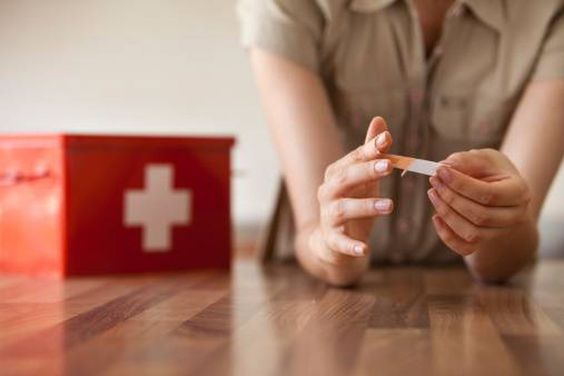Introduction:
A well-stocked first aid kit is an essential item for every home, car, and workplace. Accidents and emergencies can happen anytime, and being prepared can make a world of difference in those crucial moments before professional help arrives. Building your own first aid kit allows you to customize it based on your individual and family needs.

This comprehensive guide will walk you through the essentials of building the perfect first aid kit, ensuring you're prepared for a wide range of minor injuries to more serious medical situations. From understanding the basic supplies to customizing your kit for specific needs, we'll equip you with the knowledge and confidence to handle emergencies effectively.
Essential Supplies for Your First Aid Kit:
No matter the size of your kit, certain items are considered fundamental to any first aid kit. These essentials provide the foundation for addressing a wide range of injuries:
- Wound Care: Adhesive bandages (various sizes), gauze pads (various sizes), adhesive tape, antibiotic ointment, antiseptic wipes, hydrocortisone cream, burn gel.
- Medications: Pain relievers (such as ibuprofen or acetaminophen), antihistamines (for allergic reactions), antacids (for heartburn or indigestion).
- Tools and Instruments: Scissors, tweezers, safety pins, disposable gloves, thermometer, CPR face shield, instant cold pack, blanket.
- Other Essentials: Hand sanitizer, bottled water, flashlight and extra batteries, whistle, first aid instruction booklet.
Customizing Your First Aid Kit
While the above items provide a solid foundation, tailoring your kit to your specific needs is essential:
- Allergies: Include any necessary allergy medications, such as an EpiPen if prescribed.
- Medical Conditions: Include supplies related to existing medical conditions like diabetes or asthma.
- Children: Add child-friendly items, like liquid pain relievers and colorful bandages.
- Activities: Customize for outdoor activities with insect repellent, sunscreen, blister treatment, and a snake bite kit.
Storing and Maintaining Your First Aid Kit
Once assembled, proper storage and maintenance are vital. Keep your kit in a cool, dry place out of reach of children. Regularly check expiration dates and replenish used or expired items. Consider taking a first aid and CPR course to gain practical knowledge and skills.





